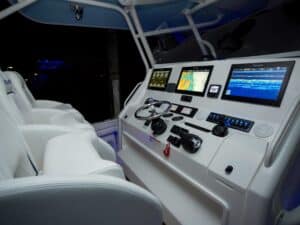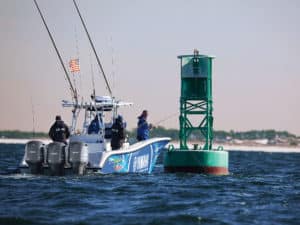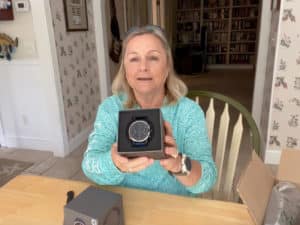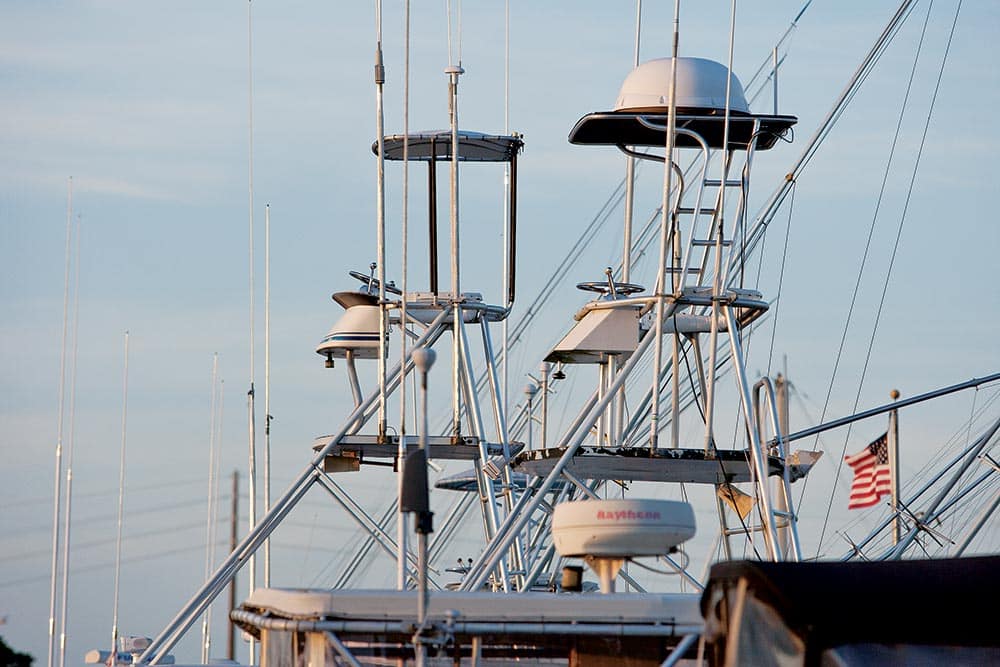
When shopping marine electronics, it’s easy to fall for a cool new multifunction display or even a VHF/AIS combo. But when it comes to shopping for parts such as transducers and antennas, where’s the love?
For anglers, the right or best VHF antenna could mean the difference between finding a great bite or enduring the skunk. On a more serious note, it could rescue you from a stranding or accident.
“If all things are equal — including antenna height and radio model — you could go from a range of 10 miles to 25-plus miles just based on the materials in the antenna,” says Chris Catoe, marine sales manager for the Shakespeare Antenna Group.
For that reason, most experts advise buying the best antenna you can afford. Prices range from about $30 to more than $300 for most recreational fishing vessels.
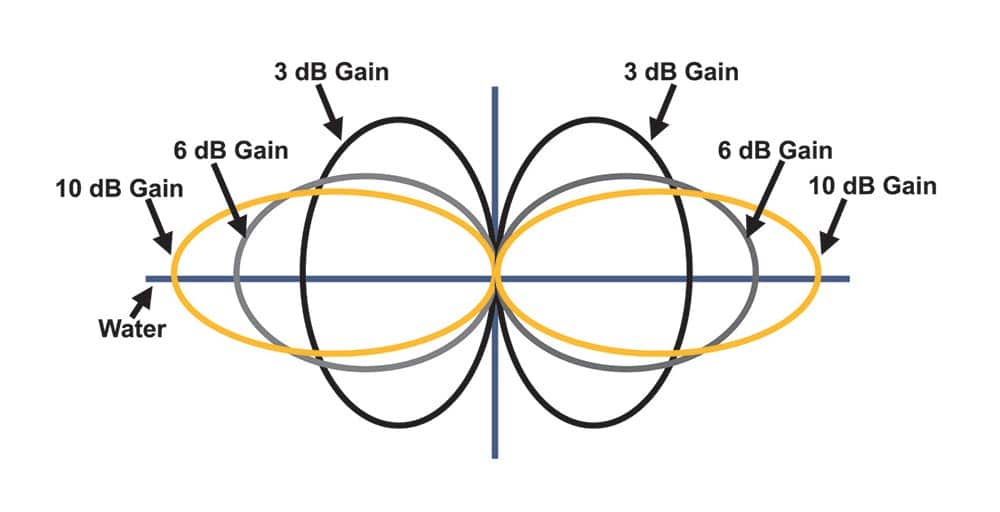
What is a VHF Marine Antenna?
“We have sensitive receivers,” says David McLain, national sales manager for ICOM, makers of VHF marine radios. “But if you match one with just a $30 antenna, you’re not going to get the range an ICOM can get you.”
At Shakespeare, VHF marine antennas are grouped into three categories that correlate to good, better and best products. Those categories are Classic, Galaxy and Phase III models. Key differences boil down to what’s inside, whether coaxial cable, a combination of coax, brass and copper, or all brass and copper; brass and copper create the greatest efficiency.
However, before dissecting antennas, anglers should understand just what an antenna is, says John Jones, vice president of engineering for Digital Antenna. “It’s a machine,” he says. “People think it’s a piece of wire. Anything we build is a physically resonant circuit for the frequencies we intend to use. An antenna converts electrical signals into photons — it’s a photon generator.”
Catoe says consumers often think, as well, that a VHF antenna transmits only from its tip. “It radiates from the base up,” he confirms.
Because of the energy surrounding the antenna and because the signals travel by line of sight, the antenna’s placement aboard a vessel is key. Even the best antenna won’t perform when placed too close to another antenna using similar frequencies (AIS or another VHF), or when mounted too low or too near metal objects.

Marine VHF Antenna Height and Strength
Other considerations for choosing the right VHF antenna include antenna height and gain. Catoe says the vast majority of powerboats in the 24- to 32-foot range do well using 8-foot antennas with 6-decibel (dB) gain. A 3- to 4-foot antenna that’s 3 dB is generally recommended for boats under 24 feet. Larger vessels can opt for 12- to 18-foot, 7 to 8 dB antennas.
“As a general rule, antenna height should be less than half the length of the boat,” Catoe says.
Higher-dB antennas generate greater effective radiated power, and that can translate into greater range. However, the lower-dB antennas, such as a 3 dB stick, are recommended for vessels like sailboats carrying antennas atop a tall mast that sways in high seas. The 3 dB antenna creates a larger signal pattern, but that pattern doesn’t travel as far, so it doesn’t leave the horizon as dramatically when the boat pitches.
Anglers who own VHF radios that are equipped with Automatic Identification System can use one VHF antenna for both functions as long as the AIS is receive-only. If your AIS unit also transmits, two antennas are necessary.
“We always recommend dedicated antennas for each,” Catoe says. “Any time you split something, you usually sacrifice something. Most people like to have both systems operating optimally.”

Durable Marine VHF Antennas
In most cases, an angler breaks a VHF antenna before it dies of natural causes. “Antenna life span is hard to establish. Some last two years; some last 30,” Catoe says. “It depends on how you’re taking care of it, and which grade of antenna you purchased.”
Better antennas have UV blockers in the paint or they might be heavier-duty fiberglass or come with stainless steel rather than plastic mounts. Shakespeare recommends boaters wash their VHF antenna with soap and water whenever they wash the boat. Don’t use abrasive detergents that can strip the finish off the fiberglass. Some boaters apply wax, Catoe says, which will not interfere with the antenna function.
Tom Burden — senior product content editor for West Marine, which sells a variety of antennas, cables and connections — says that corrosion can become a major problem, particularly at connection points.
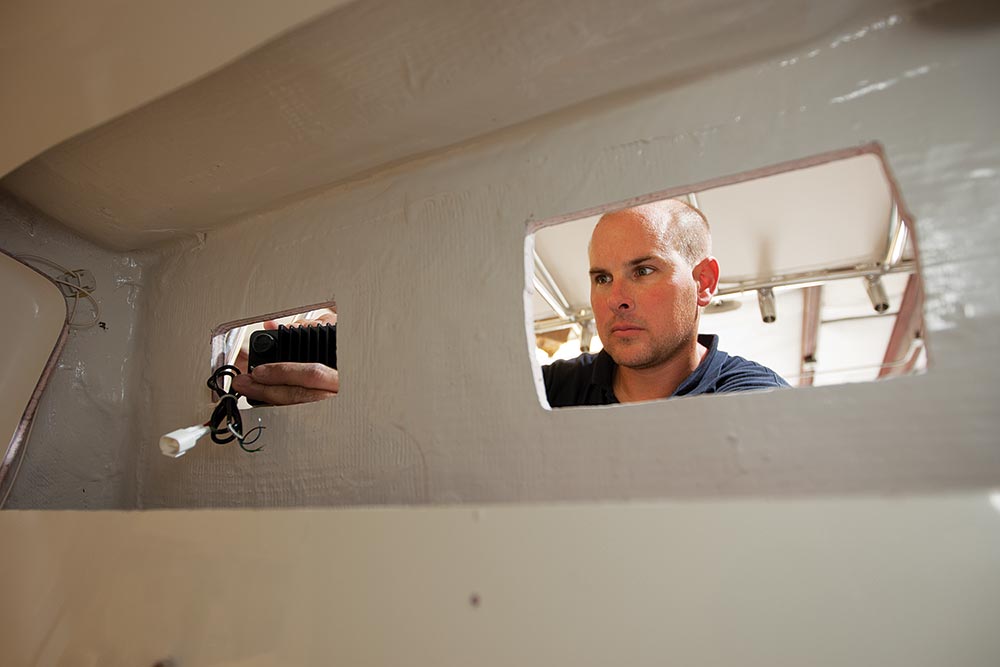
If you experience radio problems you think come from the antenna, you can always test the signal strength by calling a friend on another boat, Burden advises. Have that friend start fairly close and move away until the signal fades.
Shakespeare also sells an ART-3 antenna meter. That unit tests the voltage standing-wave ratio, the output power, battery voltage and the radio’s receiver. If the antenna is faulty, it can be replaced. Most antennas come with three- to five-year warranties.
When you buy a new antenna or replace an old one, chances are you won’t run into the tech creep that plagues other electronics types. Physics more or less defines the technology of an antenna, so it hasn’t changed much over time. Materials have changed a little, but “the biggest trend I’m seeing,” says Catoe, “is the combination of things: antennas or radios that have multifunctions (AIS and VHF together, or cellular and Wi-Fi). It’s all about centralizing all product in a smaller footprint.”


